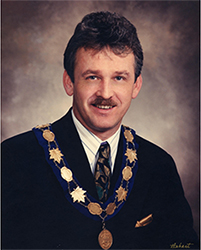Streetcar No. 351

The Legacy Beacon at Windsor's Waterfront, Home of Streetcar No. 351
Visit this historic streetcar and the accompanying bilingual exhibition Streetcar No. 351 Windsor, And the Story of Public Transit on Wheels.
Hours of Operation
Streetcar No. 351 is located inside the Legacy Beacon at 780 Riverside Drive West. General admission is free.
Streetcar No. 351 Exhibition & Concession Now Closed for the Season
- Re-opening May 1, 2026.
Parking
Limited paid parking is available at the Legacy Beacon site. Additional parking is available in Lot 23 at Caron Avenue between University Avenue and Riverside Drive West. Please take care crossing Riverside Drive: cross at the lights two blocks east at Bruce Avenue, or two blocks west at Crawford Avenue.
Group Tours
Private tours are available year round (fee applies). For information about group tours and educational programming, please call Museum Windsor at 519-253-1812 or contact wmuseum@citywindsor.ca by email. All bookings require at least two weeks notice.
Michael D. Hurst Legacy Park
 During an in-camera meeting in 2023, and as part of the Legacy Beacon project, City Council approved naming the new site the Michael D. Hurst Legacy Park, in honour of the former Windsor mayor who served from 1992 to 2003. Windsor’s riverfront was once a thriving railway connection for industry. The naming of this site recognizes Hurst’s legacy and the significant role he played in the assembling, development, completion, preservation, planning, and programming of the then 4.7-kilometre uninterrupted stretch of riverfront parkland from the Ambassador Bridge to the Hiram Walker & Sons Ltd. Distillery. Over the years, the riverfront has undergone a metamorphosis to become an over six-kilometre stretch of greenspace, several city parks and gardens, play areas, outdoor public art, monuments and memorials, the Great Canadian Flag, and many additional opportunities for public gathering and engagement. Much of that progress can be tied back to Hurst’s vision for the waterfront.
During an in-camera meeting in 2023, and as part of the Legacy Beacon project, City Council approved naming the new site the Michael D. Hurst Legacy Park, in honour of the former Windsor mayor who served from 1992 to 2003. Windsor’s riverfront was once a thriving railway connection for industry. The naming of this site recognizes Hurst’s legacy and the significant role he played in the assembling, development, completion, preservation, planning, and programming of the then 4.7-kilometre uninterrupted stretch of riverfront parkland from the Ambassador Bridge to the Hiram Walker & Sons Ltd. Distillery. Over the years, the riverfront has undergone a metamorphosis to become an over six-kilometre stretch of greenspace, several city parks and gardens, play areas, outdoor public art, monuments and memorials, the Great Canadian Flag, and many additional opportunities for public gathering and engagement. Much of that progress can be tied back to Hurst’s vision for the waterfront.
Hurst entered civic politics in 1987, serving on City Council before he successfully ran for the mayor’s seat in 1991. He served as mayor for four three-year terms, with local media often referring to him as the most influential citizen in the city at the time. After leaving office, he chaired the Detroit River Tunnel Partnership and was later named Justice of the Peace in Windsor’s Provincial Court. When Hurst received the prestigious Negev Award in 1998 from the Jewish National Fund of Canada, many politicians, community leaders, stakeholders, and colleagues took the opportunity to share their thoughts on his accomplishments, affiliations, community impact, and time as mayor. Former Canadian Prime Minister (1993 to 2003) Jean Chrétien said, “Over the years, you have demonstrated an unflagging contribution to the community of Windsor… Through your love of community, you have made an important contribution to your city and to Canada. I am sure that your example serves as an inspiration to us all, and this tribute reflects indeed the high esteem in which you are held by your fellow citizens. Your good will and dedication to the betterment of society are recognized and deeply appreciated by all those who value community service.”
The Michael D. Hurst Legacy Park includes an interpretive panel highlighting Michael D. Hurst’s accomplishments over the years, including during his time as Windsor’s mayor. The park provides the setting for the Legacy Beacon and Streetcar No. 351 exhibition space. For more information, visit Michael D. Hurst Legacy Park.
Learn more about Streetcar No. 351

The City of Windsor acquired a piece of history: Streetcar No. 351.
The story behind Windsor’s Streetcar 351 restoration was told in a documentary produced by ENWIN Utilities. This preview summarized how this artifact from Windsor’s transportation history was discovered and would be preserved so future generations can learn about the city’s technological pioneering past:
Streetcar No. 351 was built in 1918 in Cincinnati, Ohio. It is 50 feet long, and weighs 24,688 pounds.
It is believed that cars 351 to 354 were purchased by SW&A (Sandwich, Windsor and Amherstburg Railway) as used vehicles in 1927 from Public Service of New Jersey. They were equipped with smoking compartments and were placed in suburban service.
The cars were sold for $100 when the city switched to bus service in the late 1930s. Streetcar No. 351 was found in Belle River.
